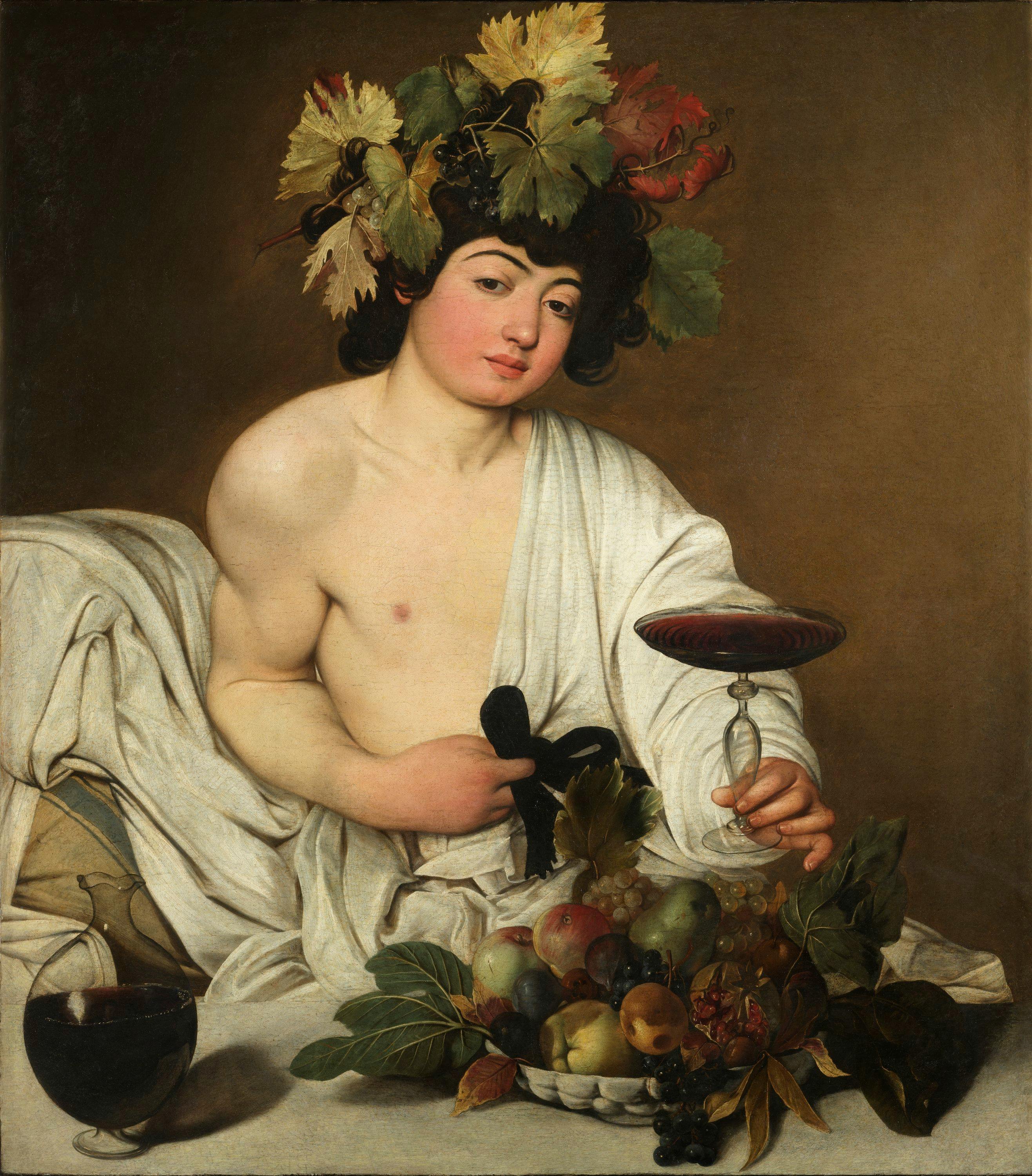Bacchus
Michelangelo Merisi, known as Caravaggio (Milano 1571 - Porto Ercole 1610)
This painting is part of the author's early series of half-length portraits painted 'in chiaro', which includes works such as the 'Fruttaiolo' (Boy with a Basket of Fruit) from the Galleria Borghese in Rome, the 'Fanciullo morso dal ramarro' (Boy bitten by a Lizard) belonging to the Fondazione Longhi in Florence, and the 'Canestro di frutta' (Basket of Fruit) from the Pinacoteca Ambrosiana in Milan. In this work, Caravaggio, who in the first decade of the 17th century was the protagonist of a revolution in painting that started in Rome and spread all across Europe, displays a masterful naturalistic portrayal of still life. His depiction of the basket of fruit and of the cup of wine proffered by the god is surprising, as these elements were interpreted by some critics as a Horatian invitation to frugality, conviviality and friendship. The sculpted figure of Bacchus, who has a stunned expression due to his state of inebriation, reproduces some models of classical art, in particular the portraits of Antinous, and is instilled with a languid sensuality. In the painting, art critic Mina Gregori detected a certain vision of antiquity that celebrates the freedom of senses, as well as a reference to the Bacchic costumes and initiation rites practised in Rome. Discovered in the Uffizi’s storerooms in 1913 and attributed to Caravaggio by art historian Roberto Longhi, the masterpiece belongs to the painter's early career in Rome, when he was under the patronage of Cardinal Francesco Maria del Monte. This painting, together with the Medusa (inv. 1890 no. 1351), was donated by Cardinal del Monte to Ferdinando I de' Medici on the occasion of the wedding of his son Cosimo II in 1608.
